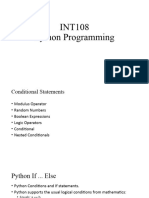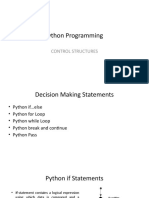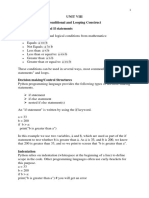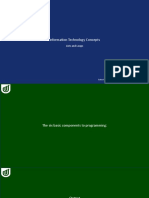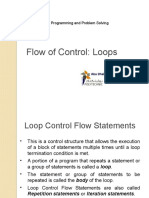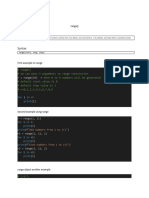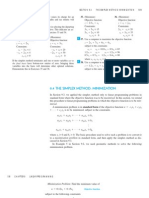Python For Loops
By
Dr Bijoy Kumar Mandal
�• Python For Loops
A for loop is used for iterating over a sequence (that is either
a list, a tuple, a dictionary, a set, or a string).
With the for loop we can execute a set of statements, once
for each item in a list, tuple, set etc.
• Example
• Print each fruit in a fruit list:
fruits = ["apple", "banana", "cherry"]
for x in fruits:
print(x)
�• Looping Through a String
Even strings are iterable objects, they contain a sequence of
characters:
• Example
• Loop through the letters in the word "banana":
for x in "banana":
print(x)
�• The break Statement
With the break statement we can stop the loop before it has
looped through all the items:
• Example
• Exit the loop when x is "banana":
fruits = ["apple", "banana", "cherry"]
for x in fruits:
print(x)
if x == "banana":
break
�• The continue Statement
With the continue statement we can stop the current
iteration of the loop, and continue with the next:
• Example
• Do not print banana:
fruits = ["apple", "banana", "cherry"]
for x in fruits:
if x == "banana":
continue
print(x)
�• The range() Function
To loop through a set of code a specified number of times,
we can use the range() function,
The range() function returns a sequence of numbers, starting
from 0 by default, and increments by 1 (by default), and ends
at a specified number.
• Example
• Using the range() function:
for x in range(6):
print(x)
�The range() function defaults to 0 as a starting value, however it is possible to
specify the starting value by adding a parameter: range(2, 6), which means values
from 2 to 6 (but not including 6):
Example
Using the start parameter:
for x in range(2, 6):
print(x)
�• Else in For Loop
The else keyword in a for loop specifies a block of code to be
executed when the loop is finished:
• Example
• Print all numbers from 0 to 5, and print a message when the
loop has ended:
for x in range(6):
print(x)
else:
print("Finally finished!")
�Nested Loops
A nested loop is a loop inside a loop.
The "inner loop" will be executed one time for each iteration of the "outer
loop":
Example
Print each adjective for every fruit:
adj = ["red", "big", "tasty"]
fruits = ["apple", "banana", "cherry"]
for x in adj:
for y in fruits:
print(x, y)
�The pass Statement
for loops cannot be empty, but if you for some reason have a for loop with no
content, put in the pass statement to avoid getting an error.
Example
for x in [0, 1, 2]:
pass
�Python While Loops
�• The while Loop
With the while loop we can execute a set of statements as
long as a condition is true.
• Example
Print i as long as i is less than 6:
i=1
while i < 6:
print(i)
i += 1
�• The break Statement
With the break statement we can stop the loop even if the
while condition is true:
• Example
Exit the loop when i is 3:
i=1
while i < 6:
print(i)
if i == 3:
break
i += 1
�• The continue Statement
With the continue statement we can stop the current
iteration, and continue with the next:
• Example
Continue to the next iteration if i is 3:
i=0
while i < 6:
i += 1
if i == 3:
continue
print(i)
�• The else Statement
With the else statement we can run a block of code once
when the condition no longer is true:
• Example
Print a message once the condition is false:
i=1
while i < 6:
print(i)
i += 1
else:
print("i is no longer less than 6")
� Some programs for your practice
• Python Program to Check Prime Number
• Python Program to Find the Factorial of a Number
• Python Program to Make a Simple Calculator
• Python Program to Generate a Random Number
• Python Program to Print all Prime Numbers in an Interval
• Python Program to Display the multiplication Table
• Python Program to Print the Fibonacci sequence
• Python Program to Check Armstrong Number
• Python Program to Find Armstrong Number in an Interval
• Python Program to Find the Sum of Natural Numbers
• Python Program to Display Powers of 2 Using Anonymous Function
• Python Program to Find Numbers Divisible by Another Number
� Some programs for your practice
• Simple * Pattern Pyramid
• Right-Angled Triangle Pattern in Python
• Inverted Right-Angled Triangle in Python
• Diamond Pattern in Python
• Full Pyramid of Numbers
• Hollow Pyramid Pattern in Python
• Inverted Number Pyramid Pattern in Python
• Number Diamond Pattern in Python
�THANK YOU












